Join us as Steve, and I take a step back to the Wild West of Mobeetie, Texas. We took a brief trip to Palo Duro Canyon for a few days and added a little side trip to Wheeler, Mobeetie, and Shamrock, Texas, along our way.
I thank my high school friend, Elaine, for suggesting we visit the Old Mobeete Jail Museum. We did not plan to visit Mobeetie, but what a great find in such an unexpected place!
Mobeetie, on State Highway 152 in northwestern Wheeler County, is considered the “mother city” of the Panhandle.
Handbook of Texas Online, H. Allen Anderson, “MOBEETIE, TX,” accessed June 22, 2020
Old Mobeetie Jail Museum
Olaughlin Street
Mobeetie, TX
(806) 845-2028
Mon-Thurs and Sat-1-5
Free Admission
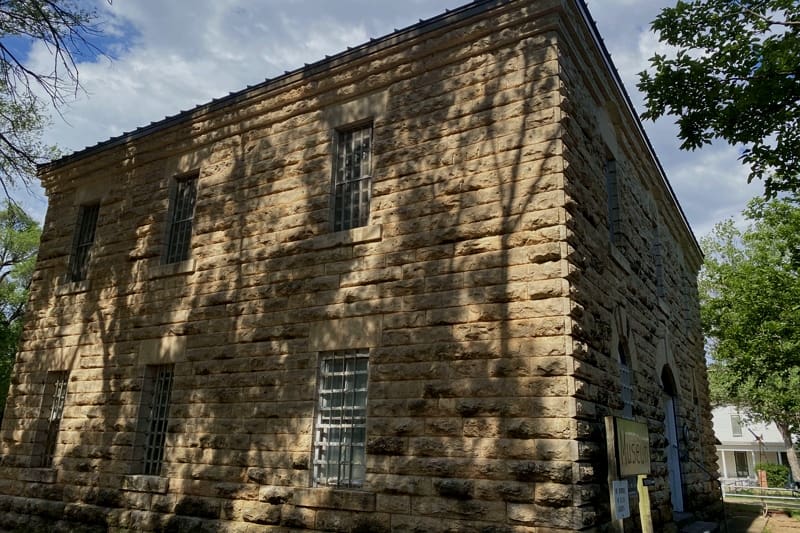
The sturdy 1886 museum building, built using locally sourced stone, at one time was the town’s jail. Today the museum building contains historical artifacts used by settlers from the county and Texas Panhandle.

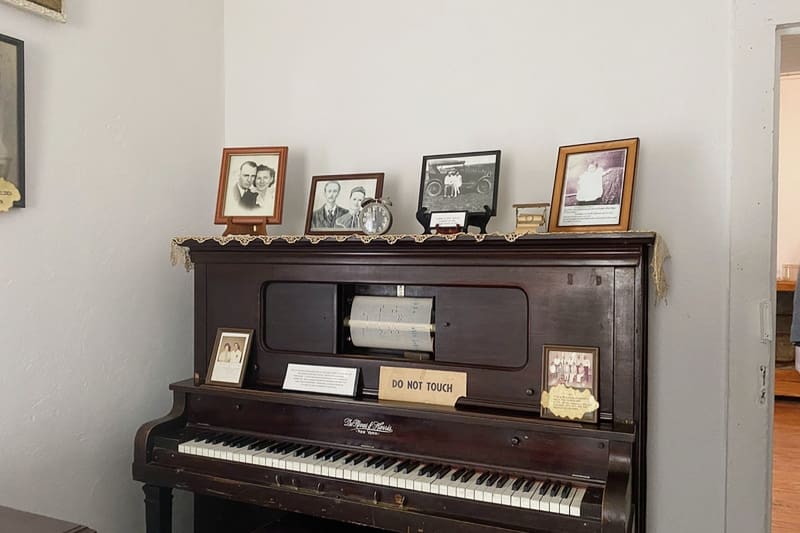
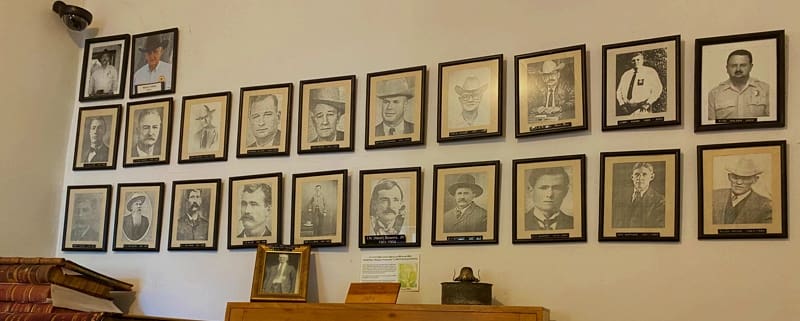
Exhibits found in the Museum.
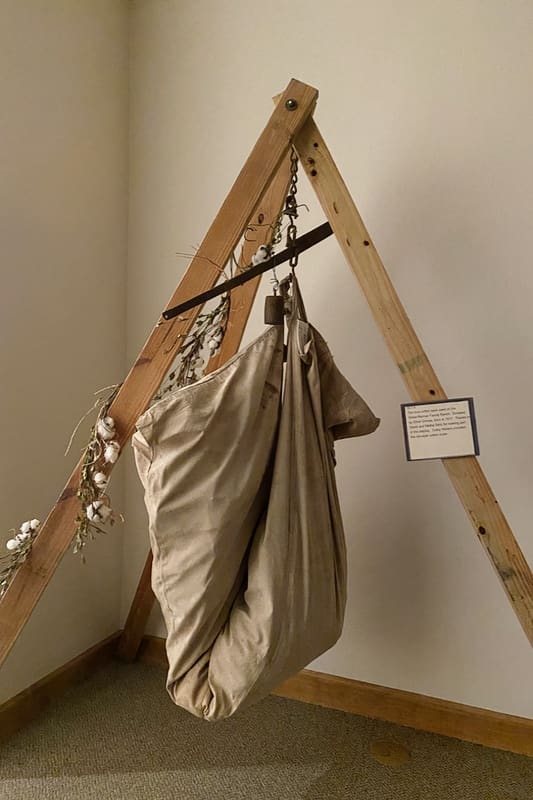
Ten-foot cotton sack used on Allred-Renner Family Ranch.
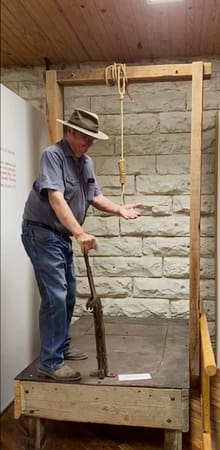
A hanging station is still installed on the second floor of this museum, complete with a trap door beneath it. The hanging station in the jail was not used even once by the City of Mobeetie. More often than not, during the wild west days, offenders were hanged from a tree, skipping the legal system altogether.
Mobeetie has a fascinating history that includes soldiers, Indians, cowboys, gunslingers, buffalo skinners, stagecoaches, cattle drives, shootouts, and all that is the wild west. It was a rough and tough town. I’m not a historian; I’m a traveler, so I will only tell just a small bit of the history we learned, mostly from our tour guide, David Seitz, about this most surprising town. I encourage you to check further into the history of this town. I am currently reading Memory Cups of the Texas Panhandle, edited by Ruth Rogers Beasley, A Revised Second Edition of Memory Cups of Panhandle Pioneers by Millie Jones Porter. This book was recommended to me by David Seitz.
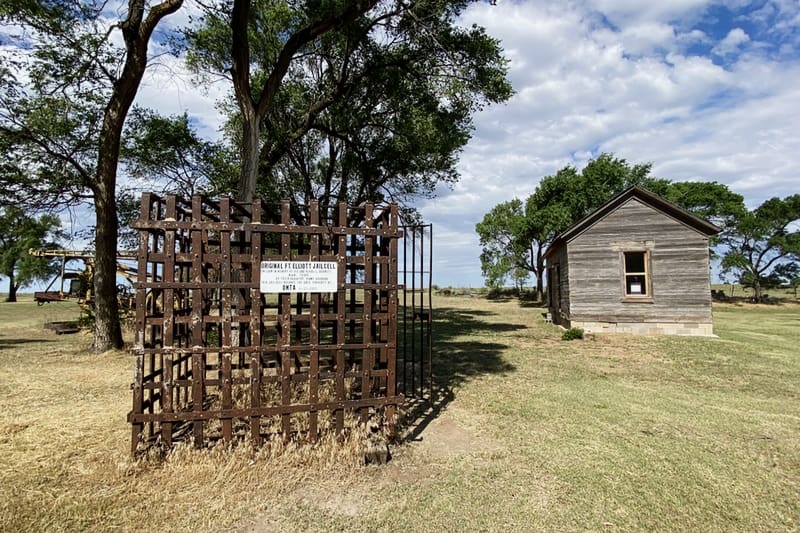
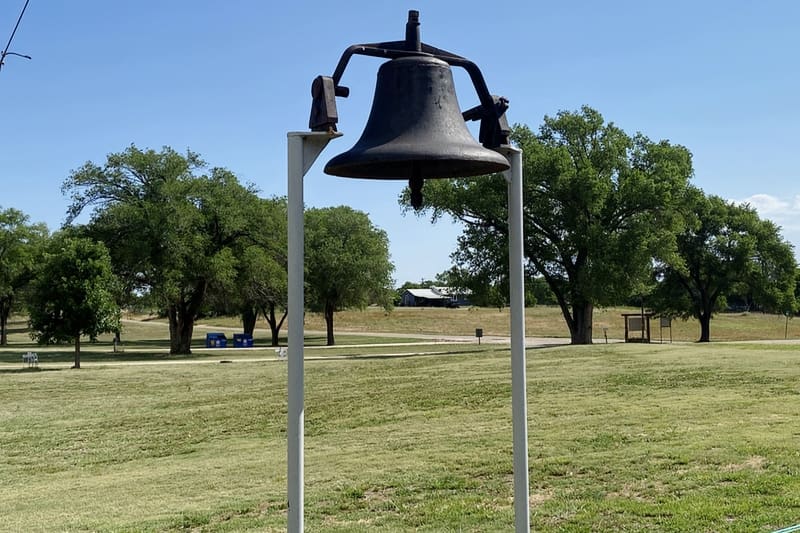
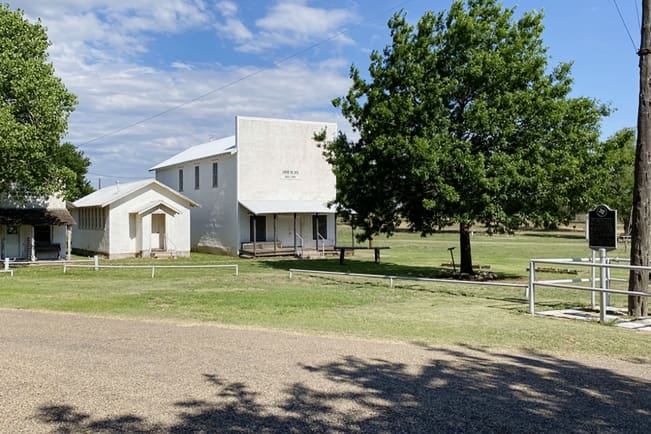

An old school, barbershop and other historic structures are situated adjacent to the museum to create a mock typical frontier town.


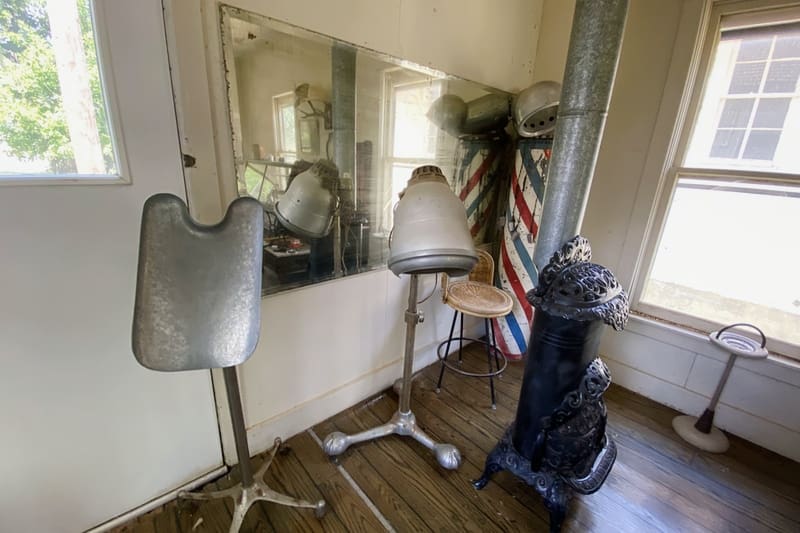
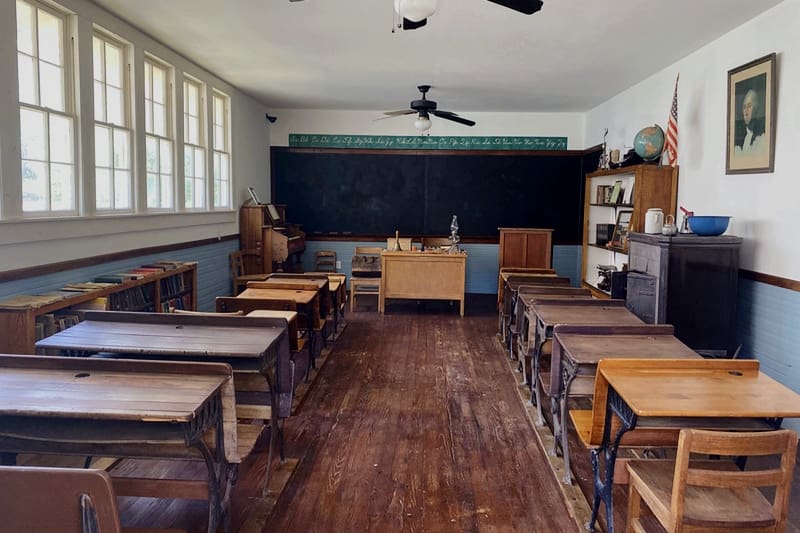
Old barbershop and one-room schoolroom
From Wild Indian territory to the buffalo skinning camp of Hidetown and more
This part of the Panhandle belonged to Apaches, Comanches, Kiowa, and other tribes in the 1700s. Buffalo hunters moved down to the Panhandle from Kansas, encroaching on the Indians’ territory, causing battles between the two. The Red River War of 1874 displaced these Native American tribes and forever changed the landscape in the Panhandle.
A year after the 1874 war, the U.S. Army established Fort Eliott to protect the buffalo trade and settlers from lingering Indian raids. A buffalo hunter’s camp named Hidetown sprang up near the fort. It became a stagecoach freight destination, buffalo skinning destination, and a connection to Dodge City, Kansas, cattle drives.
Hidetown later took on the name of Sweetwater, but when the town applied for a post office, they discovered they could not use that name. A community already existed named Sweetwater, so the official name became Mobeetie, the Native American word for Sweetwater, the story goes.
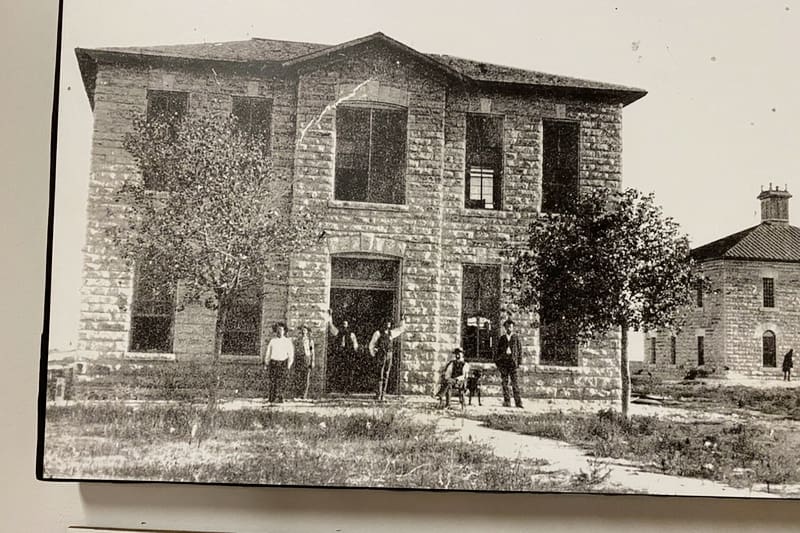
Historical Photo of Old Mobeetie Jail
By 1866 Mobeetie was a thriving community and boasted several stores, businesses, and of course, saloons. It had all the elements to make up a typical town in the Texas frontier. The population of Mobeetie in 1890 was over 400. Today, it is nearly a ghost town with a population of approximately one hundred. Three separate events affected Mobeetie’s growth unfavorably.
The tracks of the first railroad in the Texas Panhandle, constructed in 1887, were laid 18 miles north of the fort, and this distance undoubtedly led to the closing of Fort Elliot three years later. Then Mobeetie had the tragic misfortune of being hit by a devastating tornado in 1898. Finally, Mobeetie lost the county seat to nearby Wheeler in 1907. Each of these three things led to the decline of Mobeetie.
Where did Bat Masterson get that famous limp?
As Mr. Seitz tells so well in the fascinating video story above, along with other amazing stories in Mobeetie’s history, in 1876, the Sweetwater Shootout took place in Mobeetie. A turbulent Corporal King shot and killed a dancehall girl he once had a fondness for, Mollie Brennan. At the same time, Corporal King wounded the famous frontiersman Bat Masterson, who was in the saloon socializing with Mollie Brennan at that time. Bat Masterson returned fire and killed Corporal King. Bat Masterson would forever have a limp due to that gunshot wound.
Story of Gunfighter Deacon Jim Miller
Deacon Jim Miller, so-called because of his pious lifestyle of attending church regularly, not smoking or drinking, was lynched in Ada, Oklahoma, in 1909, along with three other men with Mobeetie connections. The always impeccably dressed and notorious Deacon Jim Miller was once a Texas Ranger, a hired killer, and supposedly killed at least 12 people during gunfights.
Mobeetie and the Railroad
Mr. Seitz tells the story of the history of Mobeetie and the railroad, take a look here.
When is the last time you saw an iron lung?
I do not remember ever seeing an iron lung, except on tv, but there is one on display at the Old Mobeetie Jail Museum. Mr. Seitz shared this very touching story about this particular iron lung.
Do you recognize the names of these Mobeetie citizens?
There are several well-known historical persons from the Mobeetie area. I’ve listed a few here.
Temple Lea Houston, the youngest son of Sam Houston, served as a district attorney and as a member of the Texas Senate in the 1880s when Mobeetie was the county seat. A television series, Temple Houston, aired from 1963-1964, was based loosely on Temple Houston’s life.
Emanuel Dubbs was the First County Judge in the Texas Panhandle and Wheeler County. Mr. Dubbs participated in the Battle of Adobe Walls in 1874. He once had a lawless U.S. Marshall arrested.
Captain G. W. Arrington lived in Mobeetie, was a Texas Ranger, and served as Sheriff of Wheeler and 14 attached counties in the late 1880s.
Frank Willis, Sr. was the first Judge of the 35th District from 1890 to 1881, serving as Judge for the entire Panhandle.
Fort Elliott Flagpole
This flagpole, established in 1875, was moved from a mile away from where it originally stood at Fort Elliott. This flagpole was cut from two trees and hauled to Fort Elliott by wagon and put together to build this 50-foot pole.
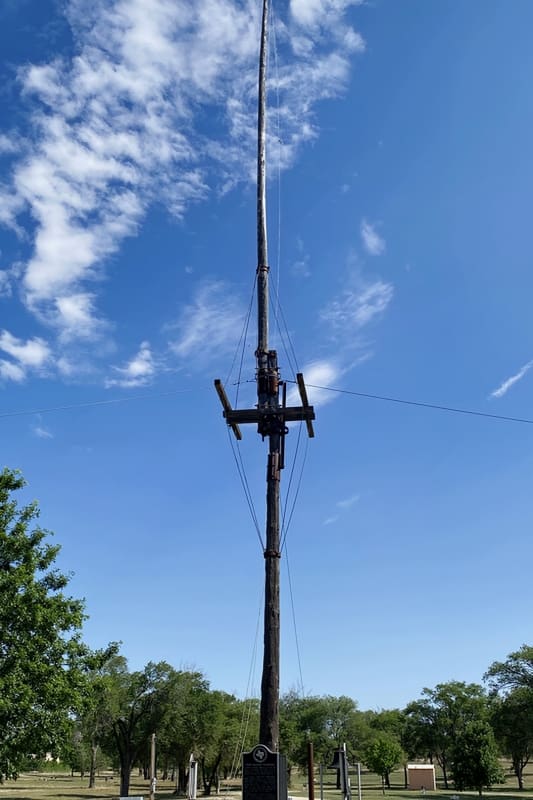
We enjoyed our tour of the museum immensely. At its conclusion, Mr. Seitz was kind enough to provide a tour of the Mobeetie Visitor’s Center in the Old Mobeetie school building. The Visitor’s Center houses another wealth of history and stories.
It has impressive western art on display (for sale!) and a gift shop full of interesting books and some gift items. See the Mobeetie Museum Store. These volunteers have done a fantastic job researching the lives of people in this area. Everything is well displayed and thoroughly researched.
My incredible find was a photo of ME, taken in 1967 when I lived in nearby Wheeler, Texas. I do not remember the circumstances of the photograph or know who the other students in the picture are. I believe it was a school-related photo.
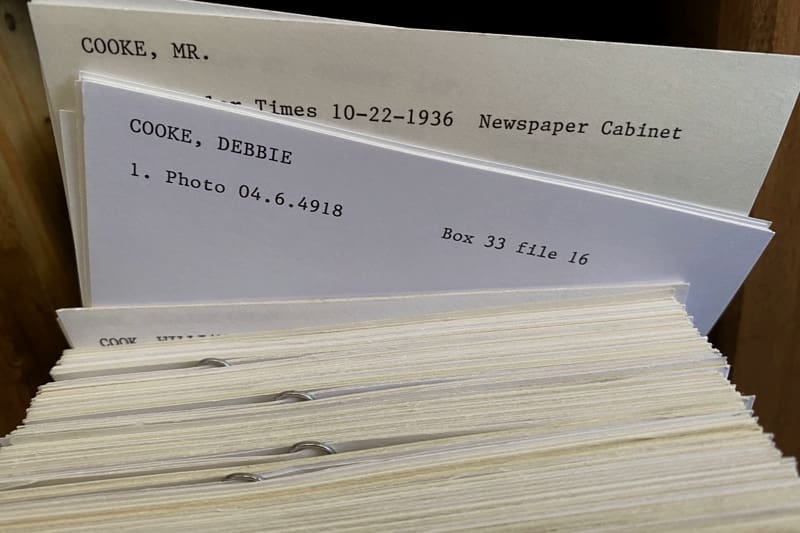

That’s 17-year-old me, Debbie Cooke, bottom left!
Road Trips and COVID
The afternoon we spent in Mobeetie was my favorite adventure, a completely unplanned stop. Mobeetie was incorporated into our four-day road trip to and from Palo Duro Canyon. The night before, we spent the night at a Holiday Inn Express in nearby Shamrock, Texas (Route 66!).
We do not make coffee in the coffeemakers provided in our room, but you may request coffee from the persons behind the reception desk. These same people will provide you with a paper sack breakfast consisting of a muffin and a piece of fruit if you request it. We had dinner at a Cotton Patch restaurant, where all staff wore face coverings.
Mobeetie was a marvelous adventure. I am so happy we drove the few miles from Wheeler to take a look and so pleased to have met Mr. Seitz and had the honor and privilege of hearing his amazing stories. Mobeetie, Texas, was a five-star adventure for us!
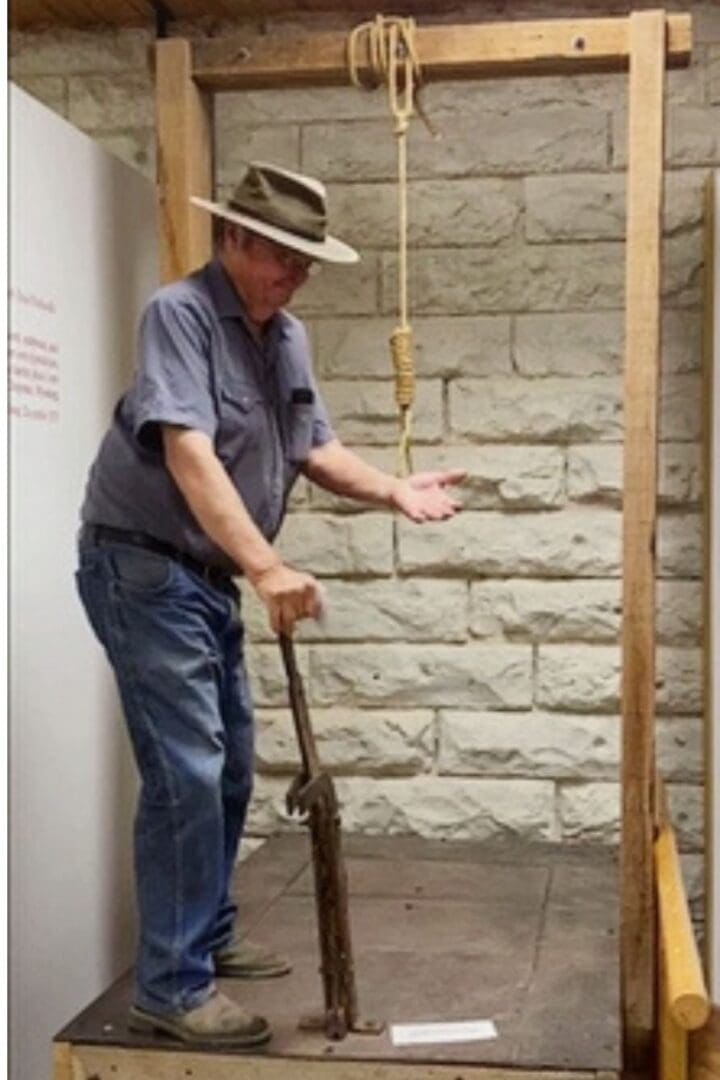
My Mama (1928-2013) was born and raised in Mobeetie. ♥️
From what I saw, Mobeetie is a great place to be from. Do you live in Mobeetie now? As I mentioned in my post, I lived in Wheeler with my parents three sisters, and my brother. I attended Wheeler High School from mid-1967 to mid-1968.
Can’t you just imagine sitting outside in the shade of a big tree, sipping iced tea with Mr. Seitz, and listening to his stories?
Amazing that there was a picture of you in the museum! What fun!
Yes, indeed. Mr. Seitz’s stories were factual but very entertaining for both of us. That picture was just quite a surprise. I am so impressed by the research and cataloging these folks have done in Mobeetie.
I loved listening to Mr. Seitz. You need to have him send you more stories! What an adventure!
He is a great storyteller! Steve and I both enjoyed every word he had to say.